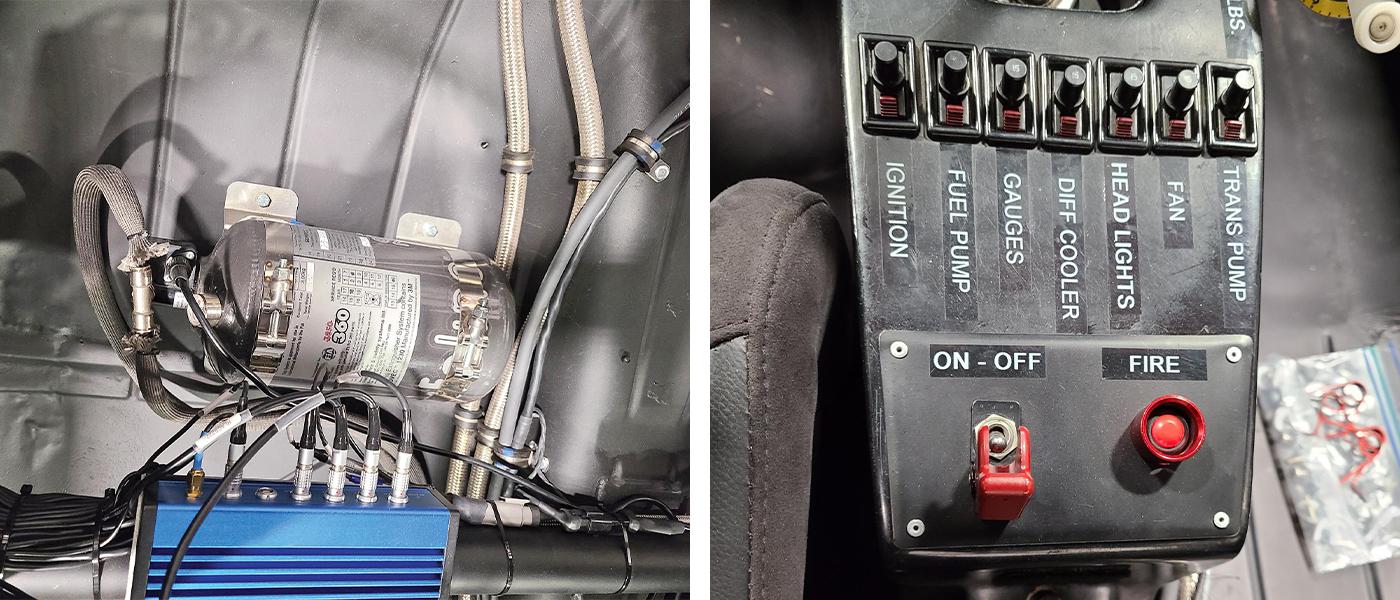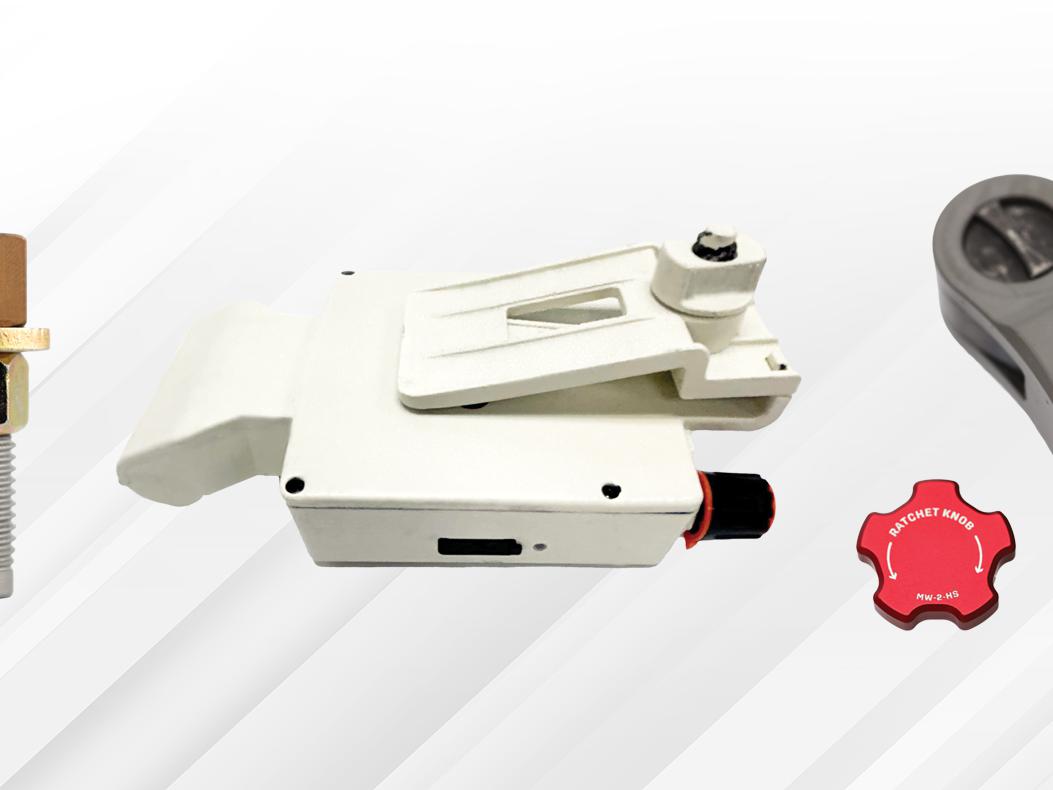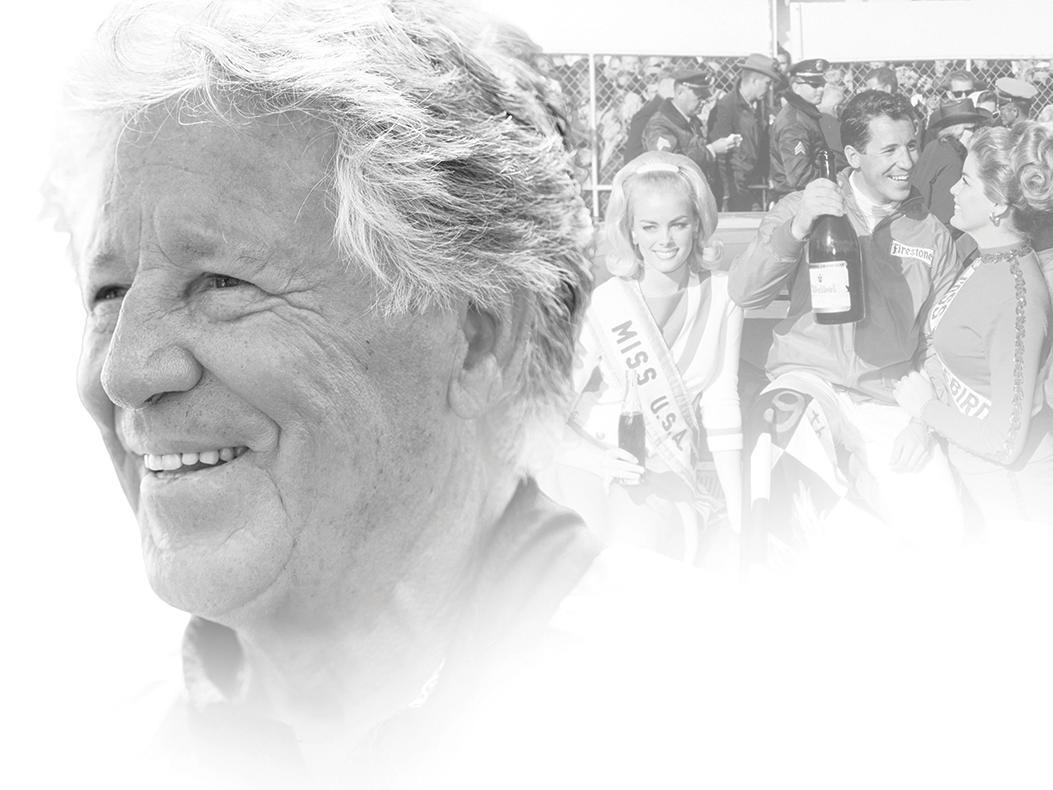Stop Doing That…Do This Instead: Fire Suppression Systems

Pictured here is a Lifeline 3.0 kg system with electronic activation installed in a 1973 BMW CSL. Note the positioning of both push buttons to activate the system in the image at top left, as well as the placement of the fire bottle in the image at bottom left. Photos courtesy of HMS Motorsport.
Following these basic yet critical components of using and installing a fire suppression system can lead to a protected race car, but most importantly, a saved life.
A fire suppression system is something a racer hopes to never use. But if the situation does arise, the system must be sized and installed correctly to give the driver as many precious seconds as possible to get out of the burning car. Recently, we spoke with experts at HMS Motorsport in Mooresville, North Carolina; Safecraft Safety Equipment in Pittsburg, California; and Stroud Safety in Oklahoma City, Oklahoma, for tips on the proper selection and installation of a fire bottle system. When these folks tell you to “stop doing that,” take it to heart. Their advice just may save a life.
Know the Rules
When choosing a fire suppression system, all of our experts agreed that the first resource to turn to is the sanctioning body or series rulebook.
“Start with what you’re required to have,” said Safecraft’s Johanna Higginbotham. “If anyone wants to have more than that, we can lead them in the best direction to do so.”
The rulebook will dictate whether the system needs to be manually or automatically activated—or both—the number of nozzles and where to locate them, and the size of the system, usually expressed by weight or volume of the suppressant.
There is a fundamental difference in approach to fire suppression systems between those series adhering to SFI specifications—NHRA, NASCAR and other circle track racing—and those, like IMSA and the SRO Motorsports Group, that follow the FIA’s rules, noted HMS Motorsport’s Zach Schucker.
“FIA systems tend to be smaller than an SFI system because they are trying to do different things with the fire system,” he explained. “The SFI has a rule about having a nozzle by the fuel cell, but the FIA ignores the fuel cell, because 90% of fires start in the engine bay area, not near a fuel cell. An oil line or even a power steering line, on the cars that still have it, is more likely to come off and catch fire compared to a fuel cell having a puncture or a leak and creating a fire.”
Series not affiliated with either FIA or SFI, such as the SCCA, NASA, and club race events, “will allow either sort of system,” Schucker said, “as long as you follow the manufacturer’s guide to installation and that you’re up to certification on that system.”
Installation Orientation
Stroud Safety has an easy-to-understand diagram in its suppression system installation instructions showing the recommended locations for the fire bottles and how they should be oriented. “There are definitely mounting positions that are incorrect,” said Stroud Safety’s Tommy Cunningham, primarily because of how the bottle works. The extinguishing agent exits the bottle via a siphon tube, which must remain submerged in the agent. That won’t happen, for long, anyway, if the bottle is mounted upside down. Likewise, mounting the bottle parallel to the ground with its head pointing to the front of the vehicle means the tube will quickly starve if the system is fired under heavy braking. Mounting the bottle low in the chassis, parallel to the ground but perpendicular to the chassis axis, is Stroud Safety’s preferred location; the next best is mounting the bottle parallel to the ground and in line with the chassis axis, with the bottle head pointing to the rear of the vehicle.
The bottle should be positioned so the tech inspector can read the bottle’s gauge and label, said Higginbotham. Otherwise, “I’ve seen guys have to take the bottles out of the car to pass tech.”
Nozzle orientation is important as well. Stroud Safety recommends mounting them in an inverted position to keep the ports from getting blocked by dirt or other debris. If using a nozzle with a 180-degree spray pattern, it should be mounted so the spray pattern is horizontal, Schucker said. A vertical spray pattern “decreases the radius that the suppressant will spread out and cover the fire.”
Also, check with the system’s manufacturer to find out how many nozzles can be plumbed to each bottle, Higginbotham said. “Our 5-pound kit comes with three nozzles, but we’ve seen customers try to plumb more than that on them. That’s not what we recommend.”
Don’t Do That
It’s common, Higginbotham said, for racers to install the firing cable in a manually operated system without considering the driver’s position under race conditions. “Make sure you can still reach it quickly and efficiently when you’re harnessed in, in the helmet and neck brace.”
Also check that the pull handle “is firmly mounted,” said Cunningham, or you won’t be able to “fully open the system.” It takes a firm pull to activate the system.
Problems can occur when bending a system’s hard lines during installation, Schucker said. “If somebody goes to bend it, and instead of using a brake-line bender or something like that they just bend it, they’ll end up kinking it and creating a crease. When that happens, either the suppressant isn’t going to flow through there or it will flow at a very restricted rate.”
Cunningham added that “overtightening the lines at connection points often causes problems,” as do dirty threads. And, he added, all tubing radius bends “must be over 6 inches for proper functioning.”
Racers often leave the system’s safety pins in place when the car is in transit, but they’ll forget to pull the pins prior to racing, Higginbotham said. “That has to be one of the things on your pre-race checklist.”
Another item for the pre-race checklist is bottle recertification and refilling, Schucker said. “A lot of people wait until the last second and then realize their bottle is out of date. Because it’s a pressurized container, you can’t ship it expedited without a special license. Very few retailers or service centers have that certification because it’s so expensive. So you’re either stuck with ground shipping the bottle to and from, or if you’re in a rush, you may have to find someone to physically drive the bottle somewhere.” Bottles must be sent to a company “certified for that style of system,” he added. “Do your research when you purchase the system, so you know where the recertification facilities are in your area.”
SOURCES
–
HMS Motorsport
hmsmotorsport.com
Safecraft Safety Equipment
safecraft.com
Stroud Safety
stroudsafety.com
 MEMBERSHIP LOGIN
MEMBERSHIP LOGIN JOIN PRI
JOIN PRI


